What is a Triptych?
A triptych – from the Greek ‘tri’ meaning three and ‘ptyx’ meaning fold – is a work of art in three sections. Commonly a triptych is painted on wood, composed of a central panel flanked by two hinged pieces on either side. The term itself originates from the 18th century. Before this, three-part works were referred to as ‘paintings with doors’ in many languages, including contemporary French and Latin, attributed to their movable nature. However, many contemporary incarnations do not have this function. The term is often instead to refer to three separate works framed or hung together.
Notable Triptych Artworks
The Borradaile Triptych, c. 900-1000
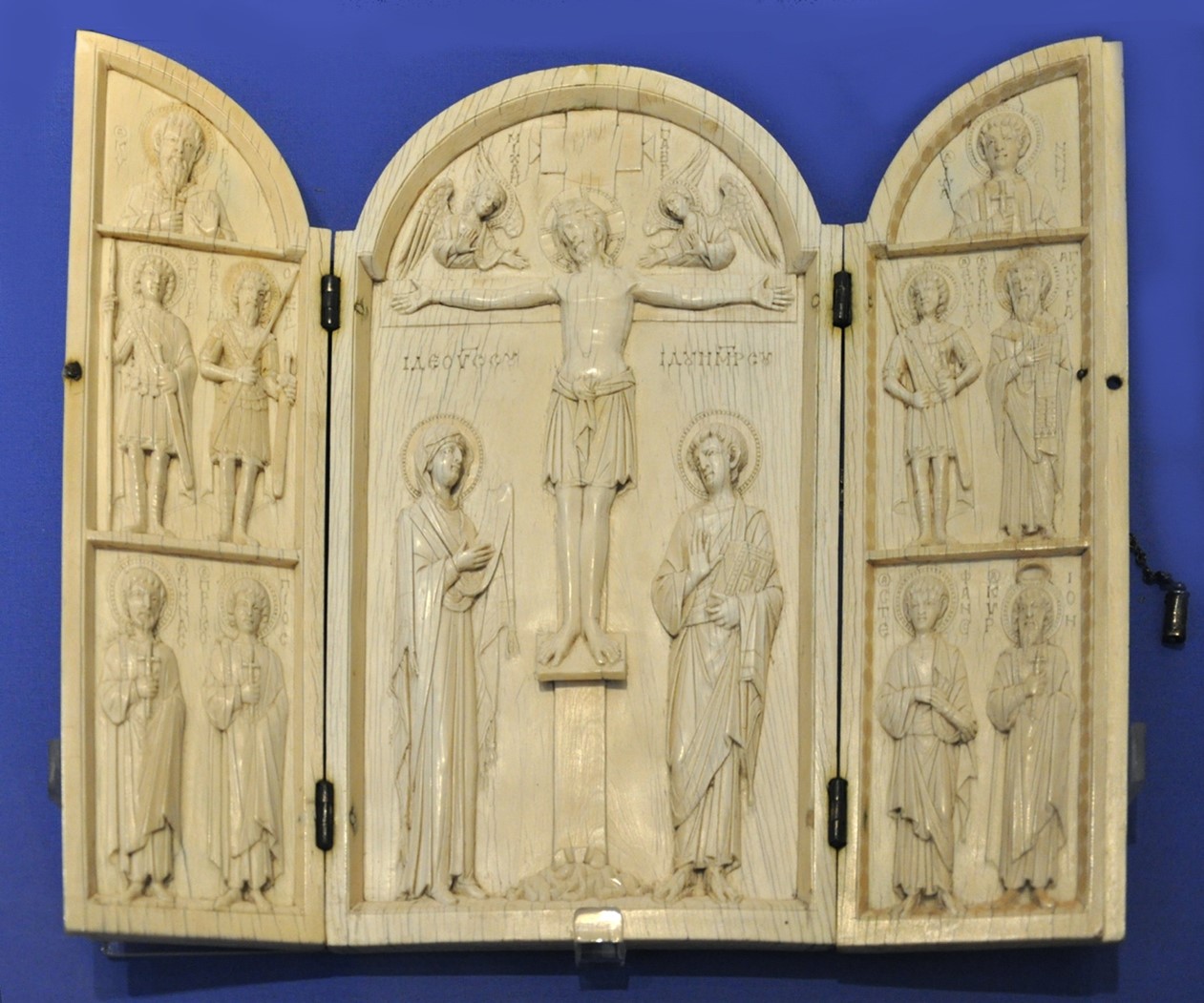
Wernher Triptych, 900 – 1000 AD
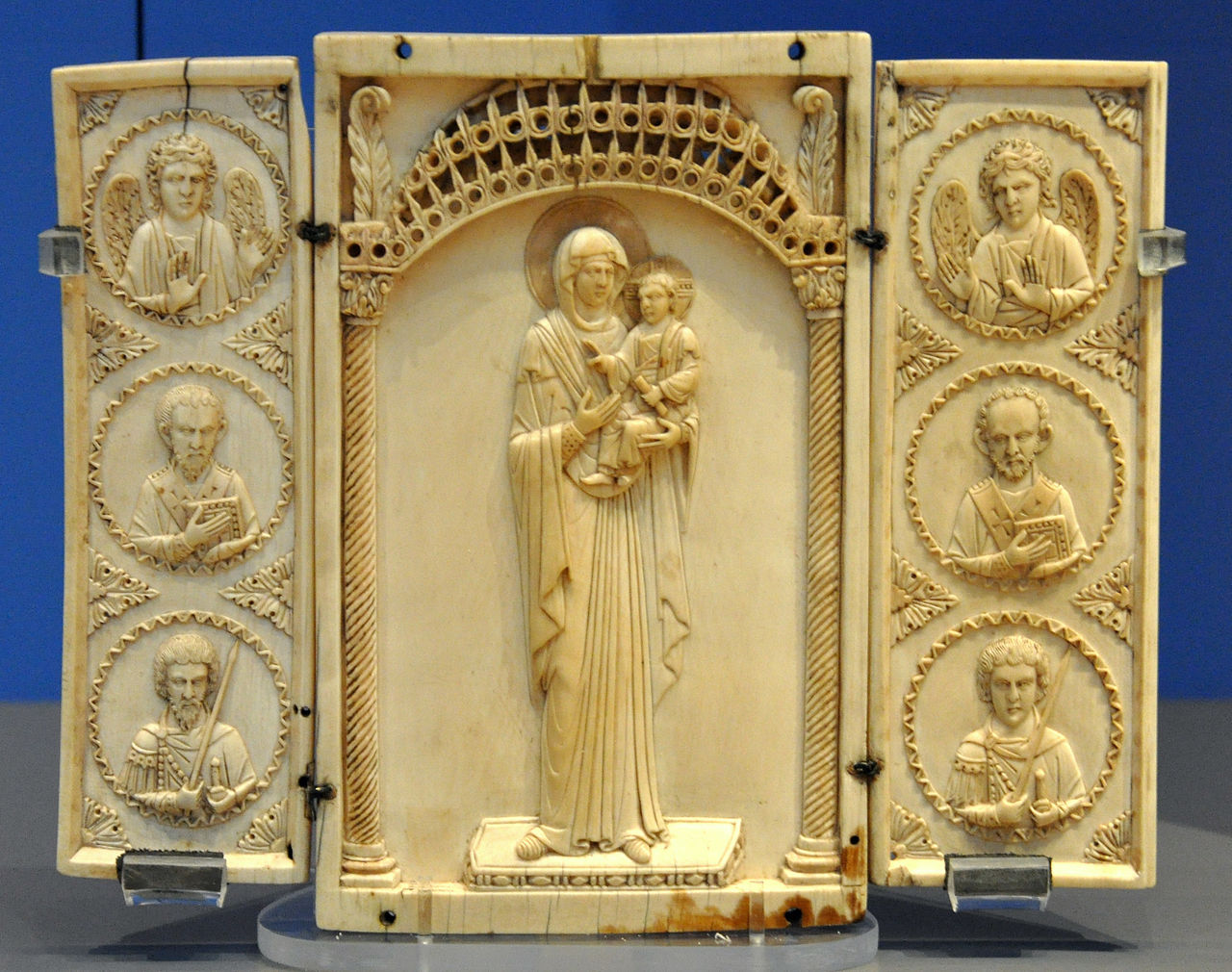
Harbaville Triptych, 900 – 1000 AD
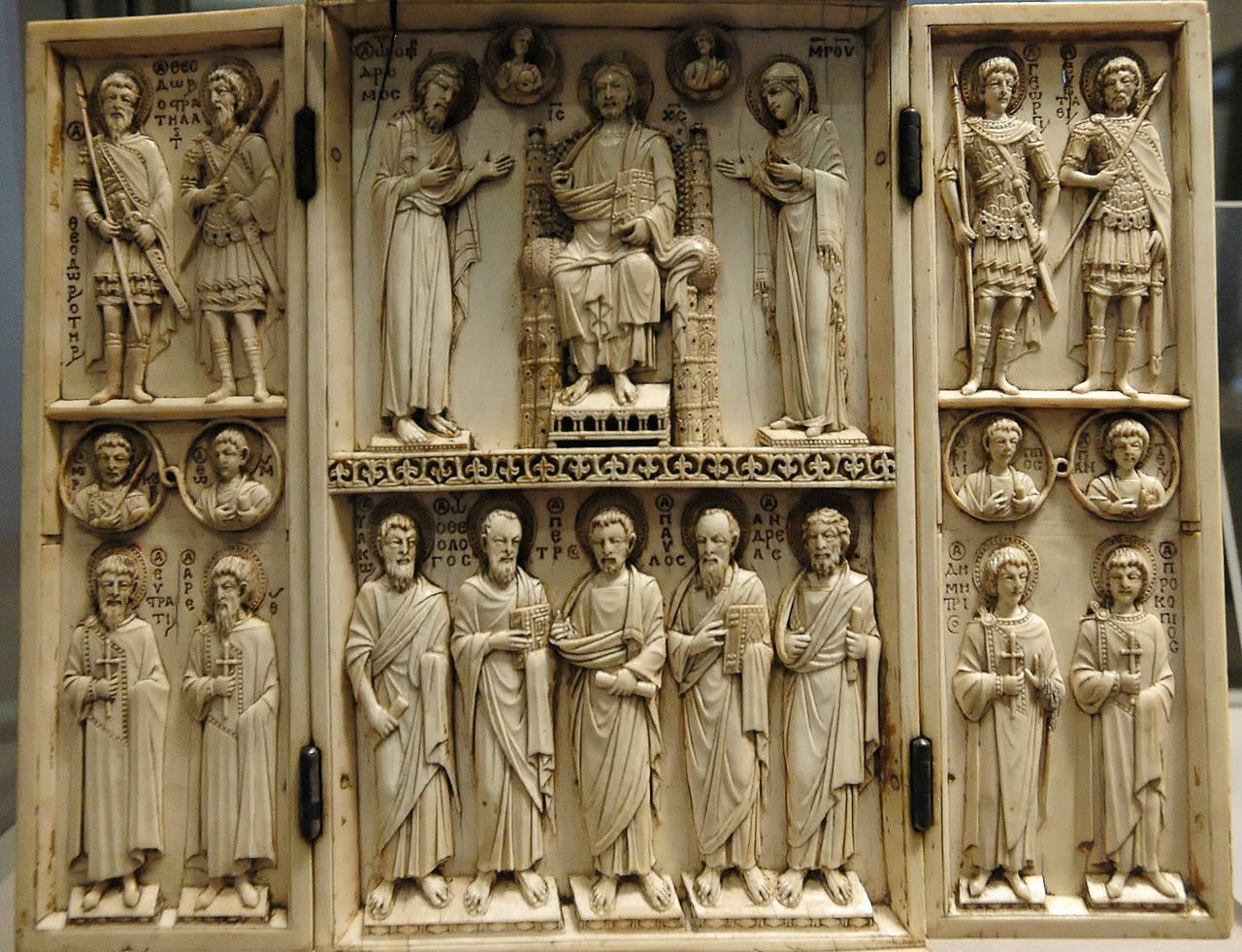
Crucifixion Triptych, Duccio di Buoninsegna, c. 1302-08
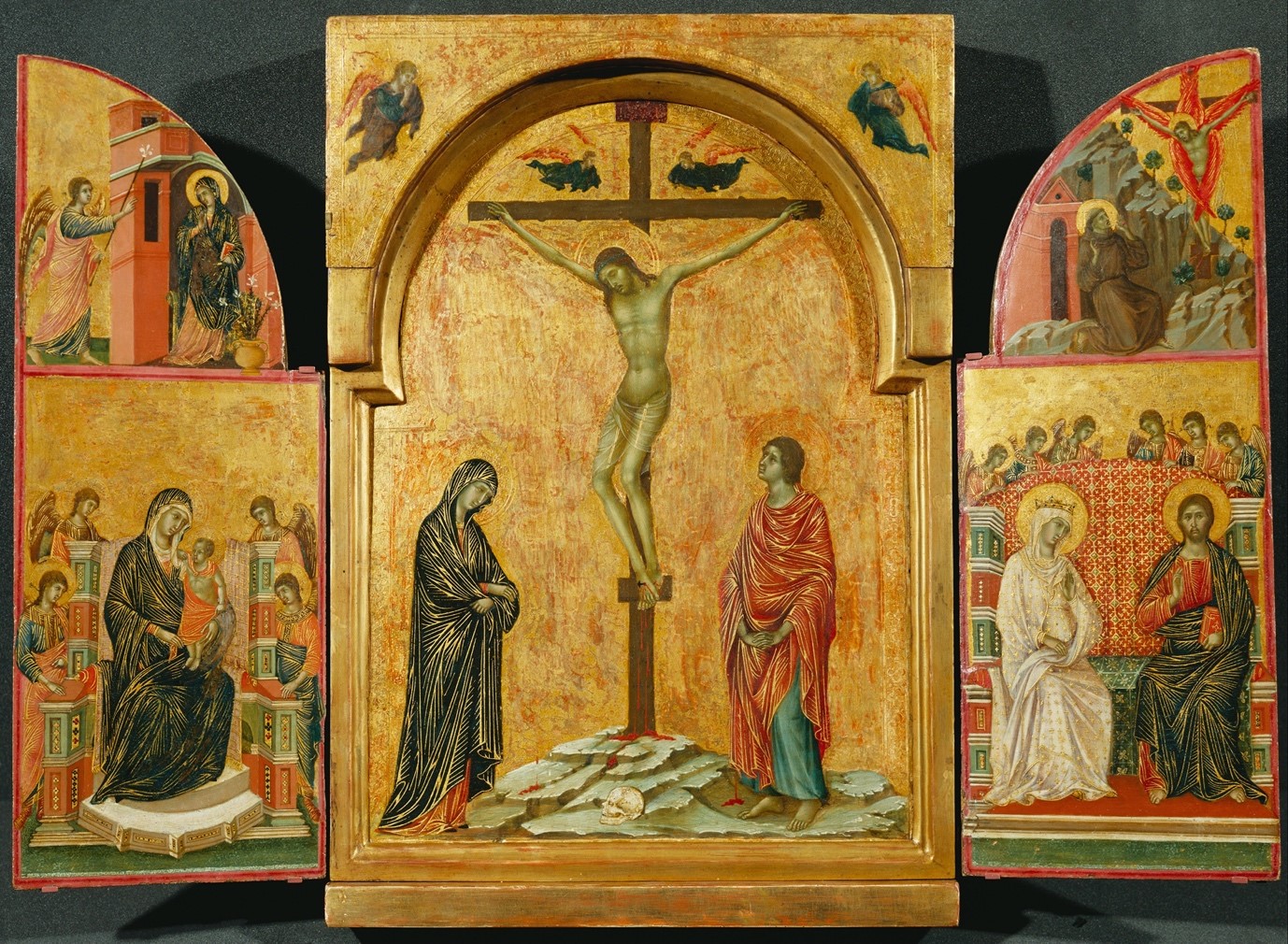
The Garden of Earthly Delights, Hieronymus Bosch, c. 1503-1515
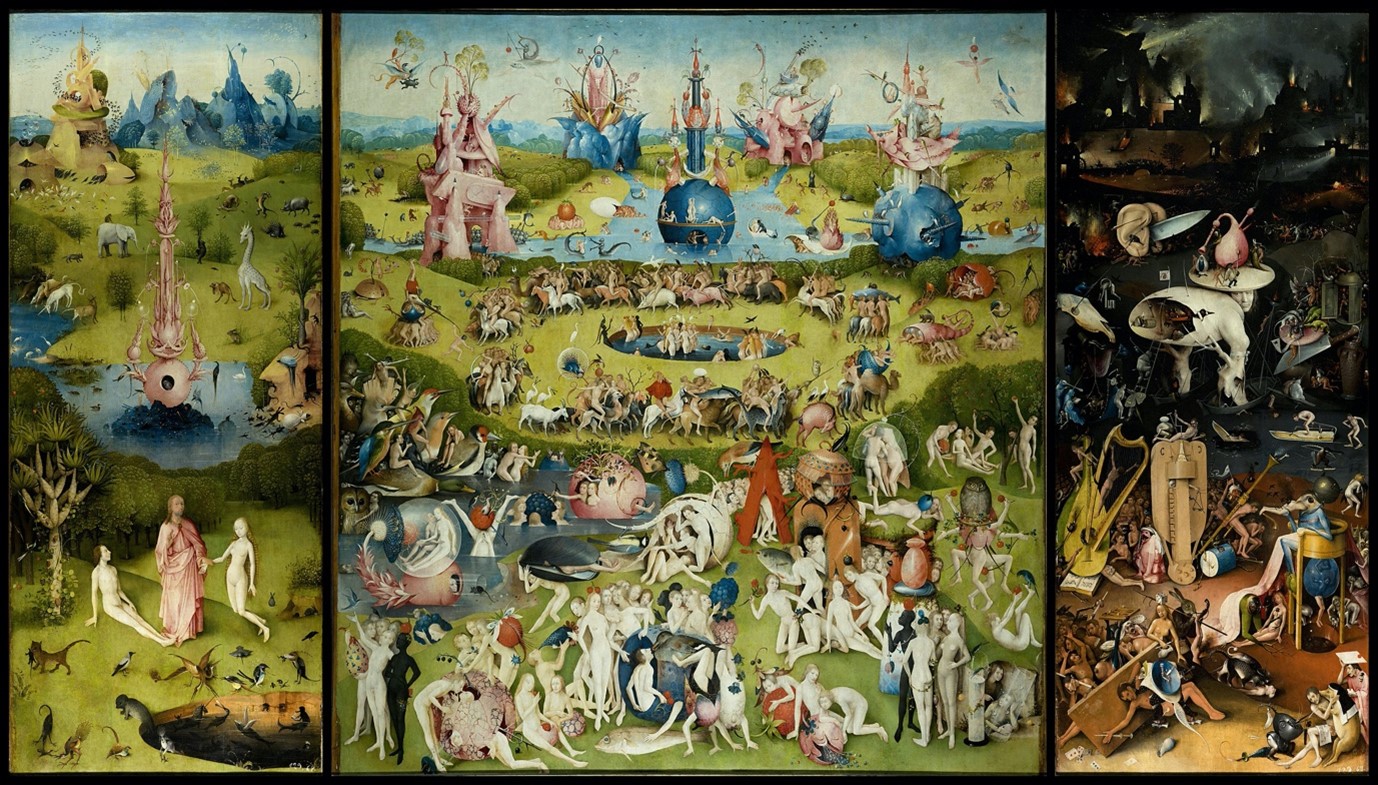
The Myth of Aino, Akseli Gallen-Kallela, c. 1891
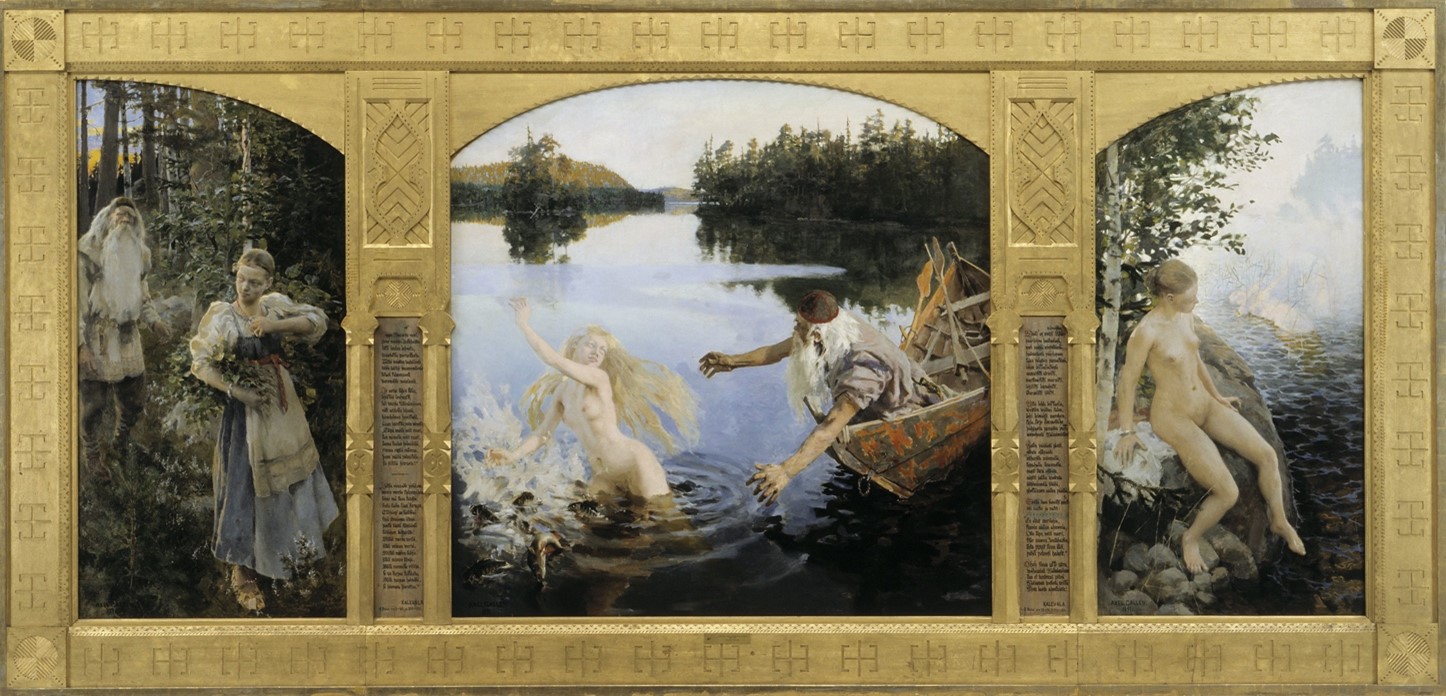
History of Triptych Art
This three-part form was established in Early Christian art, reaching the height of its popularity in the 14th to 16th centuries. Throughout much of Western art history, triptychs have been religious in nature. The three panels have a symbolic purpose, mirroring the Christian doctrine of the trinity. The subject matter often reflects this: the central panel depicts scenes of religious importance, such as the Annunciation and the Crucifixion, while the side panels often display relevant saints or donors. This compartmentalization also has a narrative function. It afforded the artist the ability to portray different settings and scenes – or even social or religious hierarchy – without compromising legibility.
In a religious context, triptychs would have been incredibly valuable objects, not only because of the exquisite materials used to create them but also due to the spiritual value the depicted subject matter bestows on them. Many triptychs have painted outers, implying they would have only been opened during special occasions – such as Easter or Christmas – to protect the sacred image inside. These objects had significant importance and fame during their time, demonstrated through extant examples of pilgrim badges designed to look like triptychs.
Examples such as the 10th century Borradaile Triptych – part of the Romanos ivories produced in Constantinople – shows how early versions were intimate, hand-held objects intended to guide personal devotion. Throughout the centuries, the works developed in size to reflect their new purpose as altarpieces, going from a private to a public devotional setting. Late Medieval triptychs were increasingly elaborate, similar to icons and other religious works from this time. As seen in Duccio’s Crucifixion, artists also incorporated decorative framing to reflect their new public status. The use of gilding also helped represent both the spiritual and monetary value of the works.
15th Century Onwards
From the 15th century onwards, artists moved away from the static gilded portrayal of scenes, instead incorporating architectural surroundings and sprawling landscapes into their work. Coinciding with the idea of the triptych as a ‘painting with doors’ – adding seemingly naturalistic surroundings, even if fictitious, helped ground the work in reality. However, this can be used to the opposite effect. The famous Garden of Earthly Delights by Hieronymus Bosch distorts nature to portray heaven and hell.
Though often associated with the development of Western art, these three-part works can also be found outside of Europe. Triptychs were a common form of Edo period woodblock printing in Japan. Within Japanese examples, the three panels are used less as divisions. In some instances, the scene continues from one print to the other without interruption.
Though triptychs waned in popularity with the introduction of large-scale works in churches, this form was repurposed by artists throughout the centuries. In his paintings of the Finnish epic Kalevala, Gallen-Kallela uses the form to tell the story of Aino in three parts. In the modern era, the three-part painting has come to be associated with the artist Francis Bacon and his famed series of triptych works. Though his works were not overtly visually religious, many of the titles (such as Three Studies for a Crucifixion) harken back to the traditional imagery for this medium.
Notable Triptych Artists
- Akseli Gallen-Kallela (1865 – 1931)
- Duccio (c. 1255 – 1319)
- Francis Bacon (1561 – 1626)
- Giotto (c. 1267 – 1337)
- Hieronymus Bosch (c. 1450 – 1516)
- Robert Campin (c 1375 – 1444)
Related Art Terms
- Byzantine Art
- Diptych
- Icon
- Panel Painting
- Polyptych
- Woodblock Printing
